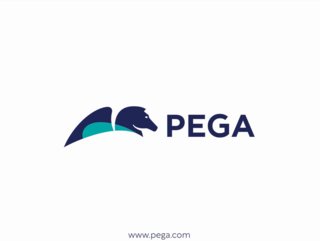Organic partnership: Pega and Virtusa

Pegasystems (Pega) was founded 39 years ago to develop the software that helps businesses navigate the growing complexity brought in by the digital age. Recently it passed $1bn in annual revenue, and it has a target to reach $5bn by 2027. Much of this growth has been driven in the last five years by the insurance market, where Pega is now seen as an essential partner. One Forrester report picked out a customer as saying his firm ‘initially deployed Pega for a customer retention use case, but now it’s a revenue generator— it’s become an addictive drug that we use in pretty much every customer-facing channel.’
Michelle Gaertner is Pega's Managing Director of Enterprise Accounts, and specialises in this key sector. “My team is focused on helping our largest insurers find new ways to harness untapped economic value using Pega software. This uses pictorial models and business vernacular to generate code, such as Java: in short, we're a low-code no-code enterprise application development platform that's enhanced by AI, robotics and a vast library of services and connectors. The platform is like a Swiss army knife: It can be used in the intelligent automation of a huge variety of business applications.”
Customer relations is life blood to insurance carriers. Pega fabricated a CRM solution on its core platform, with a complete set of telephony and chat integrations for their call centre and AI-enabled self-service capabilities. “We often have interactions that start in the front office and persist into the back office. This allows our customers to view all these through a single pane of glass. It's a customer decision hub that allows them to up-sell, cross-sell, and retain their clients.” Whatever channel a client uses to contact their insurer, their profile and transaction history will be immediately accessible to the agent, with the work itself done in the back office. The case manager is the most powerful element in the Pega platform, and that is one of its key differentiators in the market, she says.
Another is the way it interacts with data. Pega is not a system of record: it acquires data in real time, unlike many competitors that replicate it in their applications. It derives insights applicable to any business process. The acquired data travels through Pega and is placed in the underlying system or record, acquiring no technical debt in the process. “Our software handles both simple day-to-day transactions and really complex ones,through what we call the situational layer cake. Pega's layer cake allows us to define things that are common across the enterprise. It allows users to manage complex variations without rework or duplication.”
In the early days, Virtusa built the engine that generates the core Java code that underpins Pega's architecture, so their relationship couldn't be closer – it's also a key modernisation partner for many Pega customers. “ Virtusa is our key partner in helping customers transform and leverage their legacy Pega investments into an adult channel-less customer experience application. When my team gets an opportunity to work with Virtusa in deploying Pega applications, we know that the long-term success of the customer is in really good hands. It is a key partner, especially in the insurance space.”
The mindset of Pega is to continually innovate. With some solutions, 'real time' means 'soon.' “That’s not fast enough. Pega connects to streaming data, tracks meaningful patterns, finds insights, and delivers the best prescriptive actions in less than one second, Michelle Gaertner says. “We've built the industry’s leading real-time AI engine, integrated with the best digital automation tools available, handling millions of interactions a day. There's no need to hoard and batch data any more – our customers expect immediate (and relevant) action. “We're working with customers to apply that intelligence engine to process optimisation, applying AI. At the front of insurers' minds is straight-through processing of claims. Most of our insurers are stuck at the yellow traffic light: they can neither stay at red, where further investigation for fraud or other issues is required, nor be successful, beyond the super simple, at green! Too much of claims processing is happening in the yellow. Insurance carriers would love to move from that, closer to straight-though claims, underwriting, complaints processing.”
Another important enhancement of the platform is Pega Process Fabric which gives a 360 degree view of all of the work being done for each customer, account or order by every employee and team across every application. “It provides a single aggregated location across separate applications, giving the users a holistic view to help prioritise and coordinate assignments and processes more efficiently. In the insurance world, customer experiences need to be absolutely flawless, with insight to all customer interactions. They need to have the intelligence of every customer interaction from inception to the present.”
Read the full Virtusa report HERE






